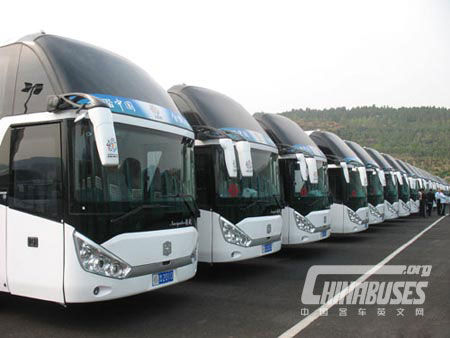According to the latest statistics, China’s sales of new energy vehicles maintained a robust growing momentum in the first half of 2016, reaching 170,000 units, up by 126.9% year on year. The sales volume of new energy passenger vehicles stood at 120,000 units, up by 135% year on year. BYD, BAIC New Energy, JAC, Geely, and SAIC Passenger Vehicles are among the handful few leading players in the market.
As for the forecast of a total sales volume of 700,000 units new energy vehicles in the whole year 2016, which was made by China Association of Automobile Manufacturers (CAAM) early this year, CAAM still keeps strong confidence and has no plan to make any adjustment.
Judging from the statistics in the past years, the sales of new energy vehicles in the latter half of the year are usually much better than that in the earlier half of the year. The sales of the fourth quarter are usually significantly higher than that of the third quarter. More often, the sales of the fourth quarter are even larger than the sales of the first three quarters combined. Take the sales of 2015 for example. In the first half of the year, China sold 75,000 units new energy vehicles, accounting for just 22.7% of the total sales volume of the year, which stood at 330,000 units. Given above, CAAM says it will not be a difficult task for China to break 700,000 units sales volume of new energy vehicles for the whole year.

As governments’ subsidies for new energy vehicles will soon be phased out, enterprises involved in manufacturing new energy vehicles are all going through a transition from policy-driven growth to product-driven growth. Despite the fast growing momentum, some insiders are worried that the absence of governments’ subsidies will adversely affect the new energy vehicle industry. Some automakers have already been closely eyeing the new energy SUV market, hoping to gain a head start. In addition, along with the changing consumers, new energy vehicles have become increasingly popular among post-80s and post-90s generations. This has further intensified market competition and pushed the new energy vehicle industry to a new development era.
BYD, one of the leading players in China’s new energy vehicle market, has sold an accumulated number of 38,000-plus units new energy vehicles in Shanghai. According to Shanghai Municipal Government’s New Policy on Purchasing New Energy Vehicles released on April 1st this year, a BYD new energy vehicle is only entitled to enjoy half of the subsidies as it used to when the accumulated sales volume of BYD new energy vehicles exceeds 40,000 units, but is less than 60,000 units.
Zhao Xinzhi, Director of Nielson China, points out that China’s new energy vehicle industry has entered the growth period from the incubation period. According to Mr. Zhao, the industry was solely driven by policy. However, it will be driven by policies and consumers’ needs in the future. Nielson China surveyed 3,326 Chinese citizens. Over half of those surveyed still expressed their willingness to buy new energy vehicles despite the absence of government subsidies. “Chinese consumers are becoming keening aware of environmental protection. Thanks to this, the new energy vehicle market will continue to maintain a sound development without government financial supports,” says Zhao Xinzhi.